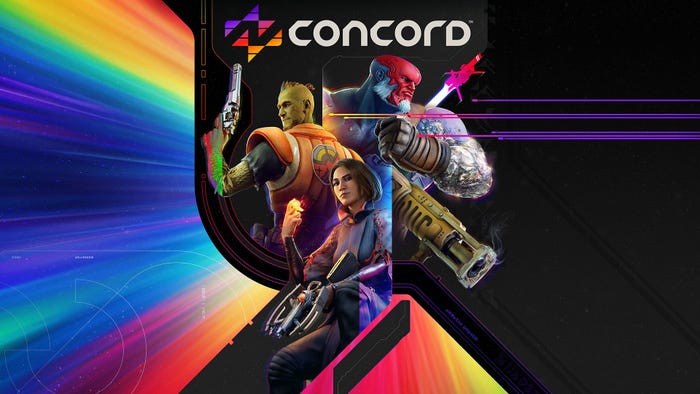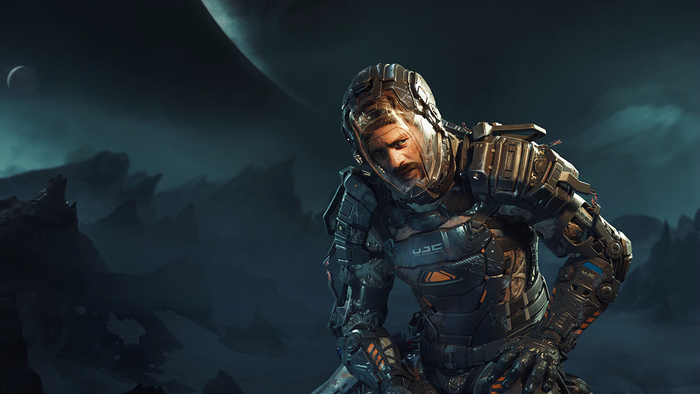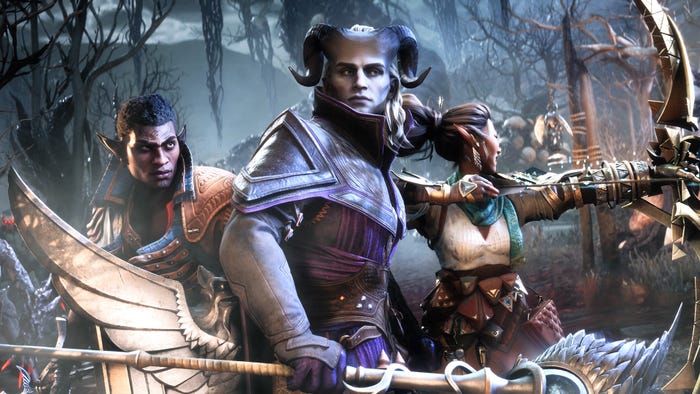
Featured Blog | This community-written post highlights the best of what the game industry has to offer. Read more like it on the Game Developer Blogs or learn how to Submit Your Own Blog Post
Criminal Case: our path to 4M DAUs
Criminal Case, by French startup Pretty Simple, is doing great on Facebook. It shows that getting millions of DAUs is possible on merits, without a huge marketing spend. So how did we design this game? Read on, and just so you know, we're recruiting..

 Criminal Case continues to rise on Facebook, now standing at over 4M DAUs, a staggering 97% of which came organically. This isn’t the first Facebook game we’ve made at Pretty Simple, but it’s the one that got the most love from players. We’re very glad it did, but it’s never only rainbows and unicorns. Criminal Case is also the game on which we worked the longest and the hardest, with most of the growing team at Pretty Simple, a little over 40 people now, focusing on it.
Criminal Case continues to rise on Facebook, now standing at over 4M DAUs, a staggering 97% of which came organically. This isn’t the first Facebook game we’ve made at Pretty Simple, but it’s the one that got the most love from players. We’re very glad it did, but it’s never only rainbows and unicorns. Criminal Case is also the game on which we worked the longest and the hardest, with most of the growing team at Pretty Simple, a little over 40 people now, focusing on it.
We’re actually hoping to find another 40 people to join us over the next year. This can seem like an eternity in the games industry, but for us building a great team is a bit like creating a game, in that you have to take the time to do things right. Criminal Case is no exception in this respect, it took us a lot of time and work to find the right formula. Here’s a bit of our thought and work process.
Choosing the idea
Choosing to do a Hidden Object (HO) game came from our passion for the genre. What’s more, HO was a good fit for the theme of murder investigations that we wanted to have, as we love police procedural TV shows and crime fictions. To us, this theming was key in order for the game to mean something strong for a large audience, and for the whole project to make business sense.
It was necessary for us to both have a project driven by passion and by a business strategy; it’s not enough doing a project we love, we needed to ensure the market was large enough in order to have a chance at economic successful. So we set out to create Criminal Case, with the ambition to make it the standard for what a casual and social game of investigation should be.
Creating the right playing experience We wanted to create an immersive experience where the player could really feel like a police investigator, unmasking murderers and bringing them to justice. In Criminal Case, the investigator solves cases by exploring crime scenes, interrogating suspects and analyzing clues. This allows building up a profile of the murderer; eventually, enough evidence is collected, and the murderer can be put behind bars. The tough thing here was finding the right rhythm for how all these player actions were sequenced, in order to create a core game loop that balanced HO gameplay sequences with the right amount of progress in the case investigation. So we iterated and playtested a lot, until we found this balance.
We wanted to create an immersive experience where the player could really feel like a police investigator, unmasking murderers and bringing them to justice. In Criminal Case, the investigator solves cases by exploring crime scenes, interrogating suspects and analyzing clues. This allows building up a profile of the murderer; eventually, enough evidence is collected, and the murderer can be put behind bars. The tough thing here was finding the right rhythm for how all these player actions were sequenced, in order to create a core game loop that balanced HO gameplay sequences with the right amount of progress in the case investigation. So we iterated and playtested a lot, until we found this balance.
 As it stands, each case has nine levels (crime scenes and bonus stages), with five stars winnable in each, and 36 stars are needed to complete a case and move to the next one. Each star, earned by mastering levels, allows the player to progress by taking an investigative action. This can mean playing a minigame like dusting an object for prints, or it can be used in a narrative sequence, for example interviewing a suspect. The first stars of a level are easier to earn, which ensures that the first few actions in a case can be taken fast, and that the narrative stage can be set before it becomes more challenging to progress.
As it stands, each case has nine levels (crime scenes and bonus stages), with five stars winnable in each, and 36 stars are needed to complete a case and move to the next one. Each star, earned by mastering levels, allows the player to progress by taking an investigative action. This can mean playing a minigame like dusting an object for prints, or it can be used in a narrative sequence, for example interviewing a suspect. The first stars of a level are easier to earn, which ensures that the first few actions in a case can be taken fast, and that the narrative stage can be set before it becomes more challenging to progress.
In terms of level design, we balanced the difficulty of the levels so that the player would always feel just the right amount of challenge, while also feeling the progress of their mastery. Out of the 60+ objects in a crime scene, we introduce only a small subset of the easier objects at first, and raise the bar progressively. What’s more, we place objects in a way that is by and large logical, and players get an experience in which they feel in control, and that isn’t an exercise in total randomness.
 Another important thing for us was to make the game intuitive enough so as to avoid the need for a walkthrough, as we had seen many HO players play other games with the walkthrough right next to their game window. We decided to build the experience so that the player would never be stuck. This means for example that only one crime scene level is available at the start of a case, and that the remaining eight levels are unlocked progressively, as the player advances in the investigation.
Another important thing for us was to make the game intuitive enough so as to avoid the need for a walkthrough, as we had seen many HO players play other games with the walkthrough right next to their game window. We decided to build the experience so that the player would never be stuck. This means for example that only one crime scene level is available at the start of a case, and that the remaining eight levels are unlocked progressively, as the player advances in the investigation.
Focusing on accessibility also led to three complete iterations on the user interface. Now a case tablet comes up every time a player earns a star, listing the investigative actions that can be taken at any given point. By the same token, as the game was in English only at first, the dialogs had to be understandable by non-natives (good thing we’re French), and we included visual aids for the key points to get across. And if all else fails, there’s always a green button to press that allows going forward, so that players never feel stuck.
Atmosphere: story and art
 Creating the atmosphere is a work that intertwines deeply art and story, in order to craft a universe in which the player feels like a police investigator, as if taking part in a police procedural TV show. We made the choice of visual realism, with a narrative tone that can express shock as well as humor. As a result, the crime scenes can be a bit graphic, and the writing sometimes uses strong language, for dramatic or humorous effects. Our view was that since our players are watching TV shows that are much more graphic and generally use stronger language, they wouldn’t have an issue with the atmosphere nor the content. This has proven true so far.
Creating the atmosphere is a work that intertwines deeply art and story, in order to craft a universe in which the player feels like a police investigator, as if taking part in a police procedural TV show. We made the choice of visual realism, with a narrative tone that can express shock as well as humor. As a result, the crime scenes can be a bit graphic, and the writing sometimes uses strong language, for dramatic or humorous effects. Our view was that since our players are watching TV shows that are much more graphic and generally use stronger language, they wouldn’t have an issue with the atmosphere nor the content. This has proven true so far.
Beyond creating the right atmosphere for a game of investigation, there’s the issue of actually producing the content, as each case requires a lot of work. We’re talking 20 people working a whole week to create a single case, and one case a week is the objective we strive to meet. The process we came up with involves crafting cases so that they have a structure allowing for such a regular production, by dividing each case into four chapters, three for the main investigation, and one for the side quests of the case. Within each case chapter, rules of storytelling apply, while each case itself happens within the frame of the district story arc and visual identity.
 The process actually starts with the district, with the objective of defining broadly the cases within it and the recurring characters appearing in the district, with personalities and background life stories. It’s no secret characters play a big part in making the stories resonate emotionally with players. Within the frame of reference of the district, each case can then be developed, usually in 3 iterations before going to production. The first iteration is a detailed pitch with characters, the murder, and the evidence defined. The second includes the narrative and investigative actions structure along with simple dialogs. The third iteration showcases full dialogs with the emotional tone of the case worked into them, and integrates part of the art assets. We found that this is the best balance between trying to prototype fast, and actually having enough material at each point for the feedback on the iteration to be meaningful and efficient.
The process actually starts with the district, with the objective of defining broadly the cases within it and the recurring characters appearing in the district, with personalities and background life stories. It’s no secret characters play a big part in making the stories resonate emotionally with players. Within the frame of reference of the district, each case can then be developed, usually in 3 iterations before going to production. The first iteration is a detailed pitch with characters, the murder, and the evidence defined. The second includes the narrative and investigative actions structure along with simple dialogs. The third iteration showcases full dialogs with the emotional tone of the case worked into them, and integrates part of the art assets. We found that this is the best balance between trying to prototype fast, and actually having enough material at each point for the feedback on the iteration to be meaningful and efficient.
On the art production side, we create three playable levels from each original scene: a global crime scene, a close-up crime scene, and a bonus stage. This allows producing quality content for our players, in a way that is manageable for the art team. We actually value having reasonable hours and sane rhythms, so the constant crunch approach was never an option. Releasing a case hastily without being happy about it or testing it thoroughly isn’t something we want to do either. So we take the time we need, and in order to do more faster, we simply need to find more talented people that want to come join us in Paris.
The road from here Development took about a year and a half before the game was released. As always it was meant to be quicker, but the game was only going to come out when it was ready. Achieving quality trumps speed of execution in our book, and we don’t regret sticking to this view. We value retention as much as virality, and retention on Facebook only happens if the core gameplay and the social gameplay are both right. By the same logic, we think efficient virality only happens if our players truly think the game is good enough to justify them inviting their friends. Earning word of mouth is maybe a bit old fashioned, and it doesn’t mean we don’t try to make the invite process as frictionless as possible, but it’s the essence of our approach.
Development took about a year and a half before the game was released. As always it was meant to be quicker, but the game was only going to come out when it was ready. Achieving quality trumps speed of execution in our book, and we don’t regret sticking to this view. We value retention as much as virality, and retention on Facebook only happens if the core gameplay and the social gameplay are both right. By the same logic, we think efficient virality only happens if our players truly think the game is good enough to justify them inviting their friends. Earning word of mouth is maybe a bit old fashioned, and it doesn’t mean we don’t try to make the invite process as frictionless as possible, but it’s the essence of our approach.
Criminal Case has been live for over 4 months now, with support for seven languages as of April. We’re overjoyed so many players come every day, but we also know we still have lots to work on. Besides adding new cases almost weekly, we’re working on some cool new features, and on bringing the investigative experience of Criminal Case to tablets. New projects are exciting as well, but for us all here at Pretty Simple, the most important part is that we keep on loving making games as individuals and as a team. So to all of you with love for casual games and talent in your craft, whether you are an iOS dev, a game designer, an artist, or a writer, come join us and let’s make some good games that millions can enjoy !
Read more about:
Featured BlogsAbout the Author
You May Also Like








.png?width=700&auto=webp&quality=80&disable=upscale)
.png?width=700&auto=webp&quality=80&disable=upscale)